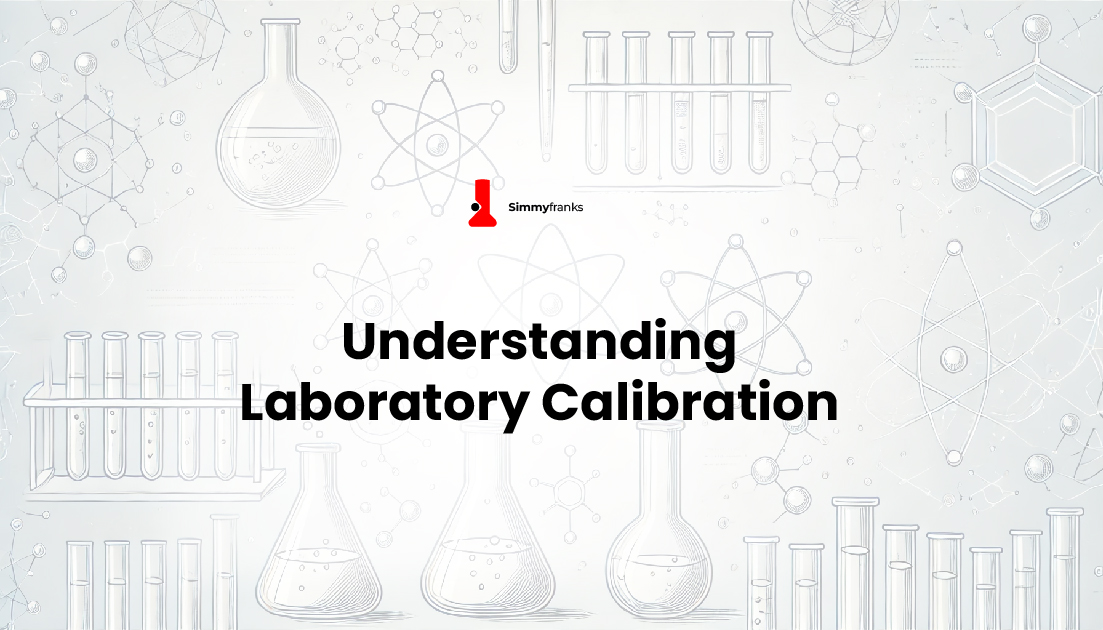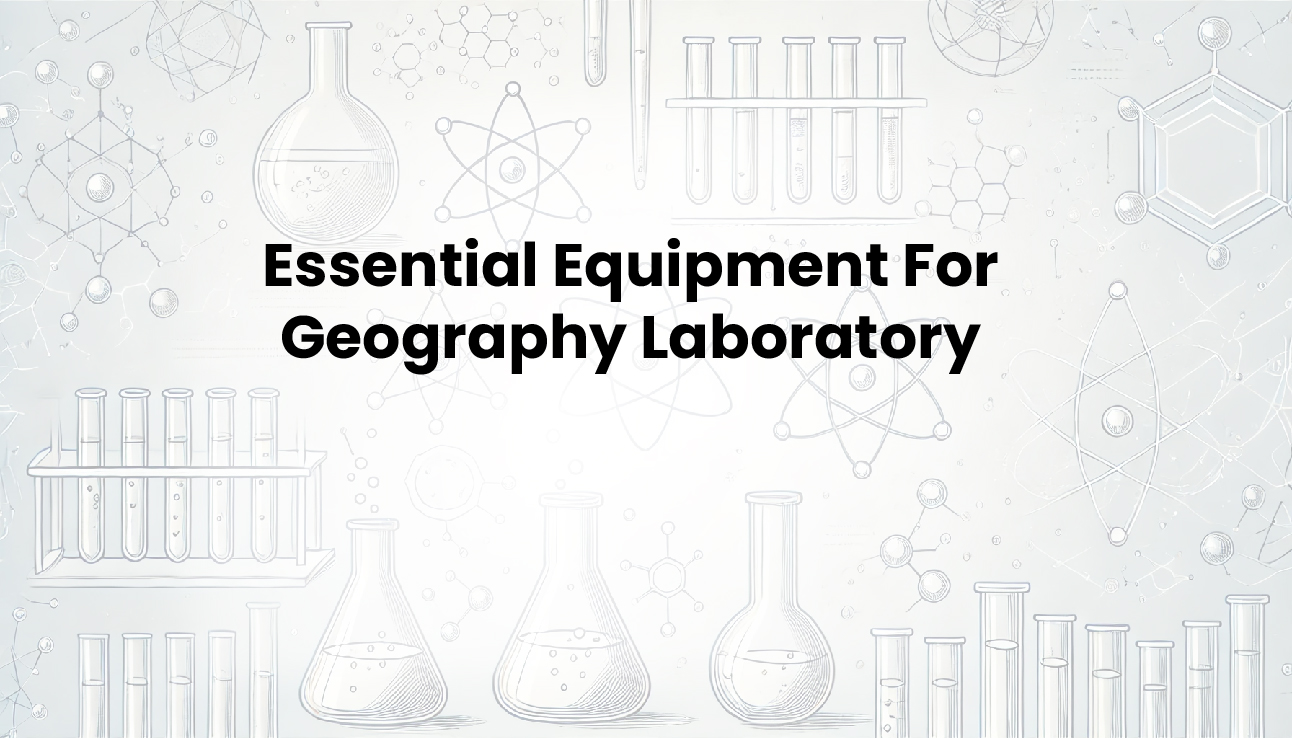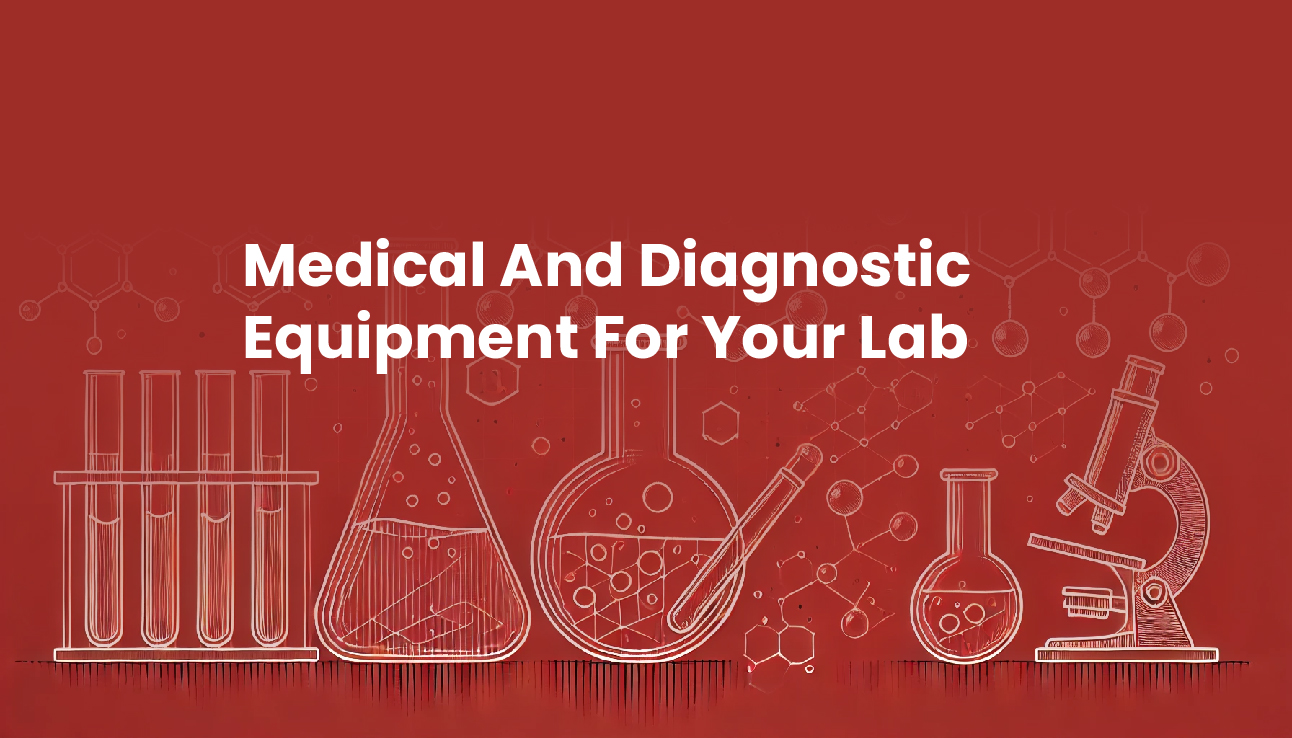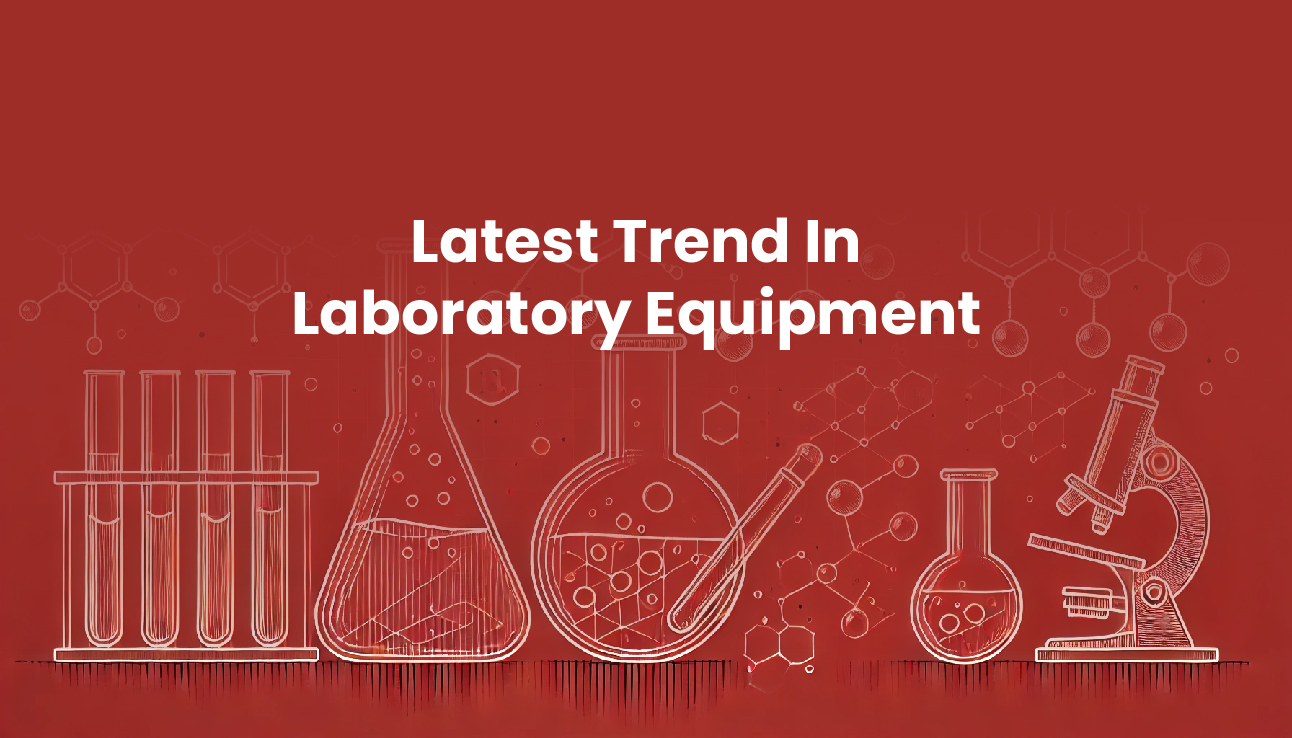Biology laboratories are vital for conducting experiments, research, and educational activities in the life sciences. Whether in academic institutions, research facilities, or industrial settings, having the right equipment is crucial for obtaining accurate results and ensuring safety.
This article outlines the essential equipment (basic and specialized) found in biology laboratories, highlighting their functions and importance.
General Biology Laboratory Equipment
1. Balances and Scales:
Balances and scales are essential tools in biology laboratories for measuring the mass of samples, reagents, and equipment.
Types of Balances and Scales:
- Analytical Balances: High precision (0.1-0.01 mg) for small samples.
- Top Loading Balances: Medium-precision (0.1-1 g) for general laboratory use.
- Precision Balances: Medium- to high-precision (0.01-100 g).
- Compact Scales: Portable, low-precision (1-100 g) for field or classroom use.
Features to Consider:
- Accuracy and Precision
- Capacity (maximum weight)
- Readability (display resolution)
- Tare function (zeroing out container weight)
- Calibration and adjustment
- Material (stainless steel, glass, or plastic)
Applications in Biology Laboratory:
- Weighing samples for analysis (DNA, RNA, proteins)
- Measuring reagents for experiments
- Preparing solutions and media
- Monitoring sample mass during experiments
- Quality control and quality assurance
Best Practices:
- Calibrate balances regularly
- Use proper weighing techniques
- Ensure balance leveling and stability
- Clean and maintain balances
- Verify accuracy with certified weights
2. Thermometers and Temperature Controllers:
Thermometers and temperature controllers are crucial instruments in biology laboratories for monitoring and regulating temperatures.
Types of Thermometers:
- Digital Thermometers: High accuracy, fast response.
- Analog Thermometers: Simple, cost-effective.
- Infrared Thermometers: Non-contact, quick measurements.
- Thermocouple Thermometers: High-temperature range.
- Glass Thermometers: Low-cost, chemical-resistant.
Temperature Controllers:
- Digital Temperature Controllers: Precise, programmable.
- Analog Temperature Controllers: Simple, reliable.
- PID (Proportional-Integral-Derivative) Controllers: Advanced, precise.
- Temperature Baths: Circulating water or oil for temperature control.
Applications in Biology Laboratory:
- Incubators: Maintaining optimal temperatures for cell growth.
- Refrigerators and Freezers: Storing biological samples.
- Water Baths: Temperature-controlled reactions.
- PCR Machines: Temperature cycling for DNA amplification.
- Cell Culture: Monitoring temperature for optimal growth.
Features to Consider:
- Accuracy and Precision
- Temperature Range
- Response Time
- Calibration and Adjustment
- Alarm Functions
- Data Logging Capability
Best Practices:
- Calibrate thermometers regularly.
- Verify temperature controller accuracy.
- Monitor temperature fluctuations.
- Use temperature-stable materials.
- Document temperature records.
3. Hot Plates and Stirrers:
Hot plates and stirrers are essential equipment in biology laboratories for heating, mixing, and incubating samples.
Types of Hot Plates:
- Electric Hot Plates: Simple, cost-effective.
- Ceramic Hot Plates: Heat distribution, chemical resistance.
- Magnetic Stirrer Hot Plates: Combined heating and stirring.
- Digital Hot Plates: Precise temperature control.
Applications in Biology Laboratory:
- Media preparation: Heating and mixing culture media.
- Sample incubation: Maintaining optimal temperatures.
- Enzyme assays: Temperature-controlled reactions.
- DNA/RNA extraction: Heating and mixing samples.
- Cell culture: Maintaining optimal temperatures.
Features to Consider:
- Temperature range and control.
- Stirring speed and control.
- Heat distribution and uniformity.
- Safety features (overheat protection, thermal cutoff).
- Material (stainless steel, glass, ceramic).
Best Practices:
- Calibrate hot plates regularly.
- Verify stirrer speed and efficiency.
- Monitor temperature and stirring.
- Use heat-resistant materials.
- Document temperature and stirring records.
4. Refrigerators and Freezers:
Freezers and refrigerators are crucial equipment in biology laboratories for storing temperature-sensitive samples, reagents, and biological materials.
Types of Laboratory Freezers:
- Ultra-Low Temperature (ULT) Freezers: -80°C to -90°C.
- Low-Temperature Freezers: -40°C to -50°C.
- Laboratory Freezer Units: -20°C to -30°C.
Applications in Biology Laboratory:
- Sample storage: DNA, RNA, proteins, cells.
- Reagent storage: Enzymes, antibodies, chemicals.
- Biological material storage: Tissues, organs, cultures.
- Vaccine and pharmaceutical storage.
- Temperature-sensitive experiment storage.
Features to Consider:
- Temperature range and control.
- Temperature uniformity.
- Alarm systems.
- Data logging capability.
- Shelving and storage capacity.
Best Practices:
- Regularly calibrate temperature.
- Monitor temperature fluctuations.
- Label and organize samples.
- Avoid overcrowding.
- Document storage conditions.
5. Glasswares:
Glassware is an essential component of biology laboratories, used for various applications such as measuring, mixing, heating, and storing biological samples and reagents.
Types of Glassware:
- Beakers: General-purpose containers.
- Flasks: Volumetric measurements and culturing.
- Test Tubes: Small-scale reactions and storage.
- Pipettes: Measuring and transferring liquids.
- Burettes: Titration and precise liquid measurement.
- Petri Dishes: Cell culture and microbiological work.
- Vials: Sample storage and transport.
Materials:
- Borosilicate Glass (Pyrex): Thermal shock resistance.
- Soda-Lime Glass: General-purpose, cost-effective.
- Fused Quartz Glass: High-temperature applications.
Applications in Biology Laboratory:
- Sample preparation and storage.
- Chemical reactions and mixing.
- Cell culture and microbiology.
- DNA/RNA extraction and purification.
- Protein assays and analysis.
Best Practices:
- Handle glassware carefully to avoid breakage.
- Clean and dry glassware thoroughly.
- Label and organize glassware.
- Use proper pipetting techniques.
- Calibrate glassware regularly.
Additional Tips:
- Regularly inspect glassware for signs of wear or damage.
- Follow manufacturer guidelines for cleaning and maintenance.
- Ensure proper glassware storage and organization.
- Train personnel on proper glassware handling and techniques.
- Document glassware calibration and maintenance records.
Advanced Biology Laboratory Equipment
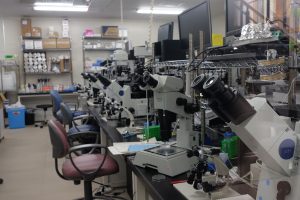
1. Microscope:
Microscopes are essential instruments in biology laboratories, enabling researchers to visualize and study microscopic structures and organisms.
Types of Microscopes:
- Compound Microscopes: High-magnification, high-resolution.
- Stereo Microscopes: Low-magnification, 3D visualization.
- Inverted Microscopes: Viewing cells and tissues in culture.
- Fluorescence Microscopes: Visualizing fluorescent markers.
- Confocal Microscopes: High-resolution, 3D imaging.
Applications in Biology Laboratory:
- Cell biology: Studying cell structure and function.
- Microbiology: Examining microorganisms.
- Histology: Analyzing tissue structure.
- Cytology: Studying cell morphology.
- Genetics: Visualizing chromosomes.
Best Practices:
- Properly maintain and clean the microscope.
- Calibrate the microscope regularly.
- Use correct lighting and contrast.
- Focus carefully to avoid damage.
- Document observations carefully.
Additional Tips:
- Regularly inspect microscope components for wear.
- Follow manufacturer guidelines for maintenance.
- Ensure proper sample preparation and handling.
- Train personnel on microscope operation and safety.
- Document microscope maintenance and calibration records.
Microscope Safety Precautions:
- Handle a microscope with care.
- Avoid touching optical components.
- Use proper lighting.
- Wear protective eyewear.
- Follow laser safety guidelines (if applicable).
2. Centrifuge:
Centrifuges are essential equipment in biology laboratories, used to separate particles or components from a mixture based on density and size.
Types of Centrifuges:
- Benchtop Centrifuges: Compact, low-speed.
- Floor-Standing Centrifuges: High-speed, large capacity.
- Microcentrifuges: Small, high-speed.
- Ultracentrifuges: Extremely high-speed.
- Refrigerated Centrifuges: Temperature-controlled.
Applications in Biology Laboratory:
- Cell separation and isolation.
- DNA/RNA extraction and purification.
- Protein separation and analysis.
- Blood component separation.
- Microbial separation and identification.
Best Practices:
- Balance tubes and samples.
- Choose the correct rotor and speed.
- Monitor temperature and vibration.
- Regularly maintain and clean.
- Follow safety guidelines.
3. Autoclave:
Autoclaves are essential equipment in biology laboratories, used for sterilization and disinfection of equipment, materials, and waste.
Types of Autoclaves:
- Gravity Displacement Autoclaves: Simple, cost-effective.
- Vacuum Autoclaves: Fast, efficient sterilization.
- Pulse Flow Autoclaves: High-capacity, flexible.
- Portable Autoclaves: Compact, convenient.
Applications in Biology Laboratory:
- Sterilization of equipment and materials.
- Disinfection of waste.
- Decontamination of biohazard materials.
- Preparation of culture media.
- Sterilization of animal cages.
Autoclave Safety Precautions:
- Wear protective gear (gloves, goggles).
- Ensure proper loading and unloading.
- Avoid overloading.
- Monitor temperature and pressure.
- Follow emergency shutdown procedures.
Autoclave Cycle Parameters:
- Temperature: 121°C – 134°C.
- Pressure: 15 – 30 psi.
- Time: 15 – 60 minutes.
- Steam: Saturated steam.
Autoclave Validation:
- Biological indicators (BIs).
- Chemical indicators (CIs).
- Physical parameters (temperature, pressure).
- Cycle verification.
4. Incubator:
Incubators are essential equipment in biology laboratories, providing a controlled environment for cell growth, tissue culture, and microbial cultivation.
Types of Incubators:
- CO2 Incubators: Maintain optimal CO2 levels.
- Temperature-Controlled Incubators: Precise temperature regulation.
- Humidity-Controlled Incubators: Maintain optimal humidity.
- Shaking Incubators: Agitate cultures for even growth.
- Hybrid Incubators: Combine multiple control features.
Applications in Biology Laboratory:
- Cell culture: Mammalian, insect, and plant cells.
- Microbial cultivation: Bacteria, yeast, and fungi.
- Tissue engineering: 3D tissue culture.
- Embryonic development: Study developmental biology.
- Protein expression: Optimize protein production.
Best Practices:
- Calibrate incubator regularly.
- Monitor temperature, CO2, and humidity.
- Maintain cleanliness.
- Optimize culture conditions.
- Document incubation parameters.
5. Spectrophotometer:
Spectrophotometers are essential instruments in biology laboratories, measuring the interaction between light and molecules to analyze biological samples.
Types of Spectrophotometers:
- UV-Vis Spectrophotometers: Measure absorbance in UV-Visible range.
- Infrared (IR) Spectrophotometers: Measure molecular vibrations.
- Fluorescence Spectrophotometers: Measure fluorescence emission.
- Nuclear Magnetic Resonance (NMR) Spectrophotometers: Measure nuclear spin.
Applications in Biology Laboratory:
- DNA/RNA quantification and purity analysis.
- Protein concentration and structure analysis.
- Enzyme activity assays.
- Cell growth and viability analysis.
- Spectroscopic analysis of biological molecules.
Best Practices:
- Calibrate spectrophotometer regularly.
- Use proper cuvettes and solvents.
- Optimize measurement parameters.
- Avoid contamination and bubbles.
- Document measurement records.
6. pH meter:
pH meters are essential instruments in biology laboratories, measuring the acidity or basicity of solutions to ensure optimal conditions for biological reactions and experiments.
Types of pH Meters:
- Digital pH Meters: Accurate, easy-to-use.
- Analog pH Meters: Simple, cost-effective.
- Portable pH Meters: Compact, field-use.
- Research-Grade pH Meters: High-accuracy, advanced features.
Applications in Biology Laboratory:
- Cell culture media preparation.
- Enzyme assays and activity measurements.
- Protein purification and analysis.
- DNA/RNA extraction and purification.
- Water quality monitoring.
Best Practices:
- Calibrate pH meter regularly.
- Use proper electrodes and buffers.
- Maintain electrode cleanliness.
- Monitor temperature compensation.
- Document pH readings.
Specialized Biology Laboratory Equipment
1. Cell Counters:
Cell counters are essential instruments in biology laboratories, used to quantify cell numbers and viability in various biological samples.
Types of Cell Counters:
- Manual Cell Counters (Hemocytometer): Visual counting.
- Automated Cell Counters: Image analysis, flow cytometry.
- Fluorescence-Based Cell Counters: Detects fluorescent dyes.
- Electrical Impedance Cell Counters: Measures changes in impedance.
Applications in Biology Laboratory:
- Cell culture monitoring.
- Viability assays.
- Apoptosis studies.
- Immunology research.
- Cancer research.
Best Practices:
- Calibrate cell counter regularly.
- Use proper dilution and staining.
- Maintain clean equipment.
- Optimize instrument settings.
- Document count records.
2. Flow Cytometers:
Flow cytometers are sophisticated instruments used in biology laboratories to analyze and sort cells or particles based on their physical and chemical properties.
Types of Flow Cytometers:
- Fluorescence-Activated Cell Sorter (FACS): Sorts cells based on fluorescence.
- Laser-Scanning Cytometer: Uses laser scanning to detect cells.
- Imaging Flow Cytometer: Combines flow cytometry with imaging.
- High-Speed Cell Sorter: Sorts cells at high speeds.
Applications in Biology Laboratory:
- Immunophenotyping: Identifies cell surface markers.
- Cell cycle analysis: Measures DNA content.
- Apoptosis detection: Identifies dying cells.
- Cell sorting: Isolates specific cell populations.
- Gene expression analysis: Measures mRNA levels.
Best Practices:
- Calibrate instruments regularly.
- Optimize experimental design.
- Use proper controls.
- Maintain clean equipment.
- Document results.
3. Microplate Readers:
Microplate readers are laboratory instruments used to measure various biological, chemical, and physical properties of samples in microplates.
Types of Microplate Readers:
- Absorbance Readers: Measure optical density.
- Fluorescence Readers: Measure fluorescence intensity.
- Luminescence Readers: Measure luminescence signals.
- Multimode Readers: Combine multiple detection modes.
Applications in Biology Laboratory:
- Enzyme-linked immunosorbent assay (ELISA).
- Protein quantification.
- Cell viability assays.
- Gene expression analysis.
- Drug discovery and screening.
Best Practices:
- Calibrate instruments regularly.
- Optimize assay conditions.
- Use proper controls.
- Maintain clean equipment.
- Document results.
4. Real-Time PCR Systems:
Real-Time Polymerase Chain Reaction (RT-PCR) systems are laboratory instruments used to amplify and quantify specific DNA sequences in real time.
Types of RT-PCR Systems:
- Quantitative RT-PCR (qRT-PCR): Measures gene expression.
- Reverse Transcription RT-PCR (RT-RT-PCR): Analyzes RNA expression.
- Digital RT-PCR: High-precision quantification.
- Multiplex RT-PCR: Simultaneously detects multiple targets.
Applications in Biology Laboratory:
- Gene expression analysis.
- Viral load quantification.
- Mutation detection.
- Gene copy number analysis.
- MicroRNA analysis.
Best Practices:
- Optimize primer and probe design.
- Use proper controls.
- Calibrate instruments regularly.
- Maintain clean equipment.
- Document results.
Safety Biology Laboratory Equipment
1. Biosafety Cabinets:
Biosafety cabinets provide a sterile environment for handling hazardous biological materials. They protect both the user and the samples from contamination. There are different classes of biosafety cabinets, each designed for specific levels of containment.
2. Fume Hoods:
A fume hood is a laboratory safety device designed to capture, contain, and exhaust hazardous fumes, vapors, and particles. It provides a safe working environment for handling toxic chemicals, biological agents, and radioactive materials.
Fume hoods are essential equipment in laboratories, ensuring the safety of personnel, preventing accidents, and promoting a healthy working environment. Regular maintenance, proper use, and adherence to safety protocols are crucial for optimal performance.
3. Gloves and Protective Clothing:
Gloves and protective clothing are crucial components of laboratory safety, shielding researchers from hazardous chemicals, biological agents, and physical harm.
Types of Gloves:
- Latex gloves: General-purpose protection
- Nitrile gloves: Chemical-resistant, latex-free
- Vinyl gloves: Low-cost, chemical-resistant
- Insulated gloves: Thermal protection
Types of Protective Clothing:
- Lab coats: Protects clothing from spills and splashes
- Aprons: Additional protection for skin and clothing
- Gowns: Full-body protection for high-risk procedures
- Safety vests: Visibility and identification
Benefits:
- Prevents skin contact with hazardous substances
- Reduces risk of chemical burns and irritation
- Protects against biological contamination
- Enhances overall laboratory safety
Eyewash Stations and Safety Showers:
To provide immediate treatment for chemical splashes, spills, or other hazardous exposures to protect eyes and skin.
There are certain criteria that the eye wash station and safety shower should meet. They include:
Eye Wash Station:
- Water flow rate: 0.4-1.5 gallons per minute.
- Temperature control: 60°F-90°F (15°C-32°C).
- Spray pattern: Gentle, even flow.
Safety Shower:
- Water flow rate: 20-30 gallons per minute.
- Shower Head height: 82-96 inches (208-244 cm).
- Activation: Easy-to-use pull handle.
Location and Accessibility:
- Within 10 seconds walking distance.
- Visible and marked.
- Unobstructed access.
Maintenance and Testing:
- Weekly inspections.
- Monthly activation tests.
- Annual certification.
Get Your Laboratory Equipment From SimmyFranks
If you’re in the market for high-quality laboratory equipment, look no further than SimmyFranks. Our extensive range of products caters to various scientific fields, ensuring that you find exactly what you need. The quality of our equipment is top-notch, providing reliability and precision for all your experiments.
What sets SimmyFranks apart is our exceptional customer service. Our knowledgeable staff is always ready to assist with any inquiries, making the purchasing process smooth and hassle-free. Plus, our competitive pricing means you can equip your lab without breaking the bank.
Overall, SimmyFranks is a trusted source for laboratory supplies, combining quality, affordability, and excellent support. Highly recommended for both seasoned professionals and newcomers alike!
Essential Equipment For Biology Laboratory: FAQ
1. What are the basic types of equipment found in a biology laboratory?
Biology laboratories typically contain a variety of equipment, which can be categorized into several types:
- Glassware: Beakers, flasks, test tubes, and petri dishes are essential for mixing, heating, and storing biological samples.
- Microscopes: Light microscopes and electron microscopes are used to magnify and visualize small organisms and cellular structures.
- Incubators: These provide a controlled environment for growing cultures of microorganisms or cells at specific temperatures.
- Centrifuges: Used to separate components of a mixture based on density, centrifuges are essential for isolating cells, organelles, or macromolecules.
- Pipettes: These precision instruments are used for measuring and transferring small volumes of liquids.
- Refrigerators and Freezers: Essential for storing biological samples, reagents, and cultures at appropriate temperatures to maintain their viability.
2. What is the purpose of a microscope in a biology lab?
Microscopes are fundamental tools in biology laboratories, allowing scientists to observe specimens that are too small to be seen with the naked eye. They enable the study of cellular structures, microorganisms, and tissues, providing insights into biological processes and functions. Different types of microscopes, such as compound, stereo, and electron microscopes, serve various purposes depending on the level of detail required.
3. Why are incubators important in biological research?
Incubators create a stable environment for the growth of microorganisms and cells by maintaining specific temperature, humidity, and gas concentrations. They are crucial for experiments involving cell culture, fermentation, and microbial growth, as they help ensure optimal conditions for biological processes to occur.
4. What role do centrifuges play in a biology lab?
Centrifuges are used to separate components of a mixture based on their density by spinning samples at high speeds. This process allows researchers to isolate cells, organelles, proteins, and nucleic acids for further analysis. Centrifugation is a common technique in molecular biology, biochemistry, and microbiology.
5. How do pipettes contribute to accuracy in experiments?
Pipettes are essential for accurately measuring and transferring small volumes of liquids. They come in various types, including manual and electronic pipettes, and are calibrated to ensure precision. Accurate liquid handling is critical in biological experiments, as even minor discrepancies in volume can lead to significant variations in results.
6. What safety equipment is necessary in a biology lab?
Safety is paramount in any laboratory setting. Essential safety equipment includes:
- Personal Protective Equipment (PPE): Lab coats, gloves, and safety goggles protect against chemical spills, biological hazards, and contamination.
- Biological Safety Cabinets: These provide a sterile environment for handling infectious materials and protect the user from exposure.
- Fire Extinguishers and First Aid Kits: These are essential for addressing emergencies that may arise during laboratory work.
7. Are there any specialized instruments used in molecular biology?
Yes, molecular biology often requires specialized equipment, including:
- Thermal Cyclers (PCR Machines): Used for amplifying DNA through the polymerase chain reaction (PCR) technique.
- Gel Electrophoresis Apparatus: This equipment is used to separate DNA, RNA, or proteins based on size and charge.
- Spectrophotometers: These instruments measure the absorbance of light by a sample, which is useful for quantifying nucleic acids and proteins.
8. How can I ensure proper maintenance of laboratory equipment?
Proper maintenance of laboratory equipment is essential for ensuring accurate results and prolonging the lifespan of the instruments. Here are some tips:
- Regular Calibration: Instruments like pipettes and spectrophotometers should be calibrated regularly to ensure accuracy.
- Cleaning Protocols: Follow specific cleaning protocols for glassware and equipment to prevent contamination.
- Routine Inspections: Conduct regular inspections of equipment to identify any wear and tear or malfunctions.


